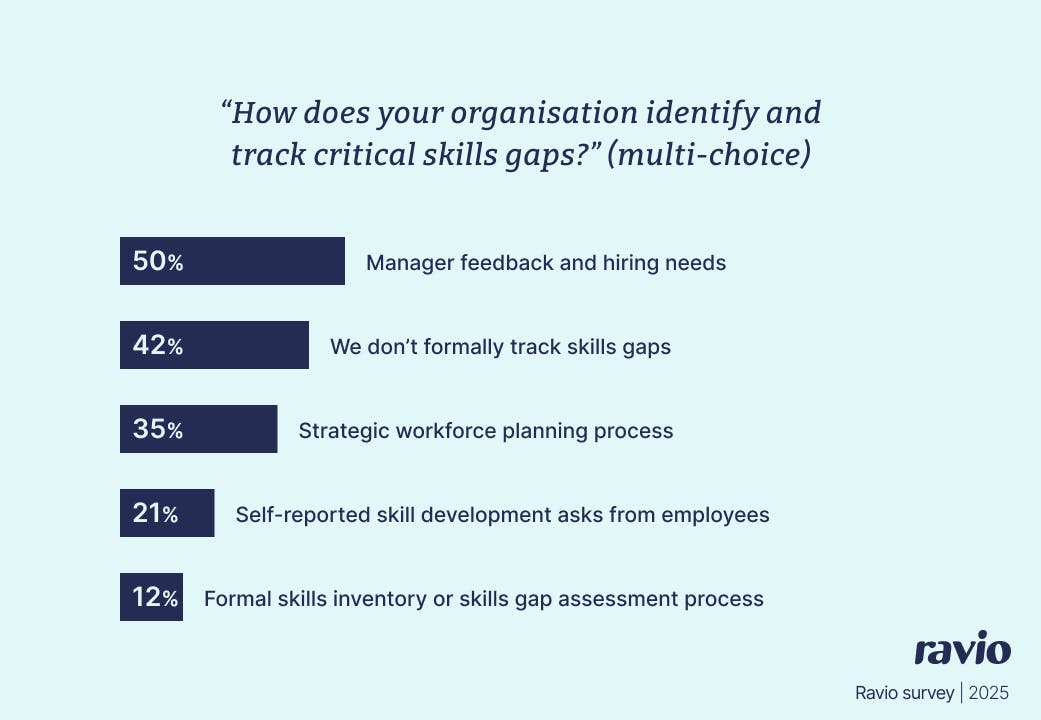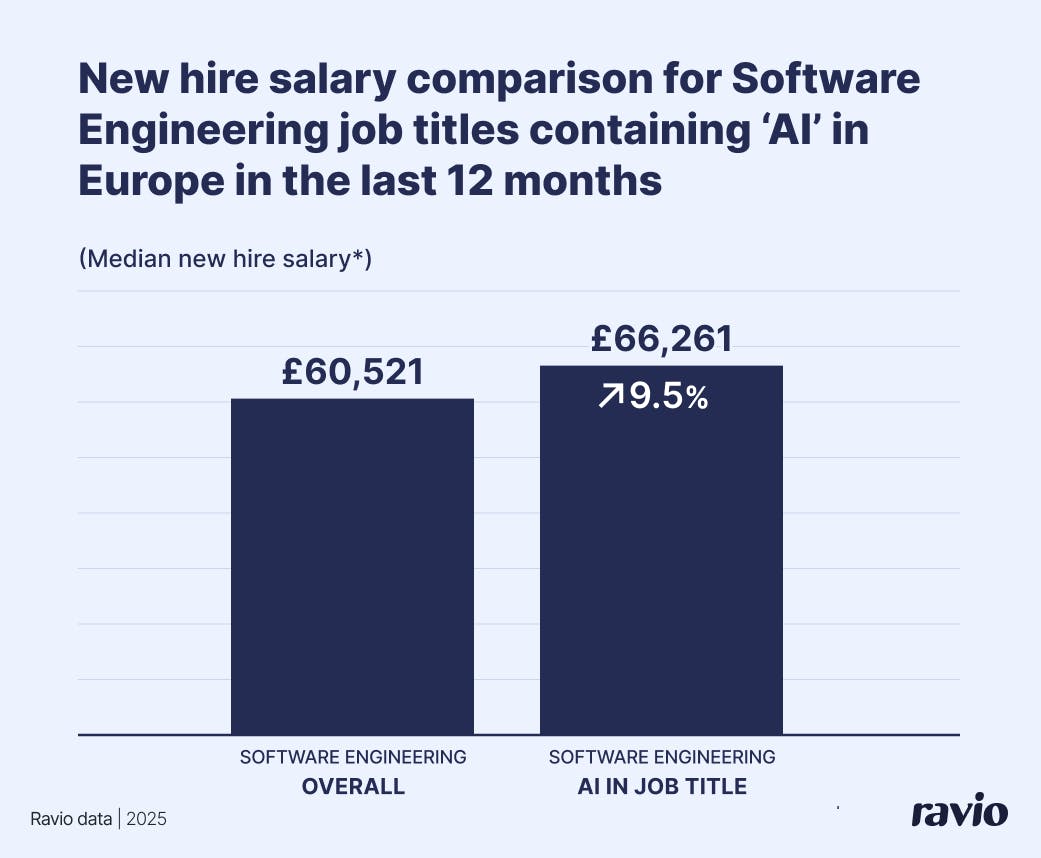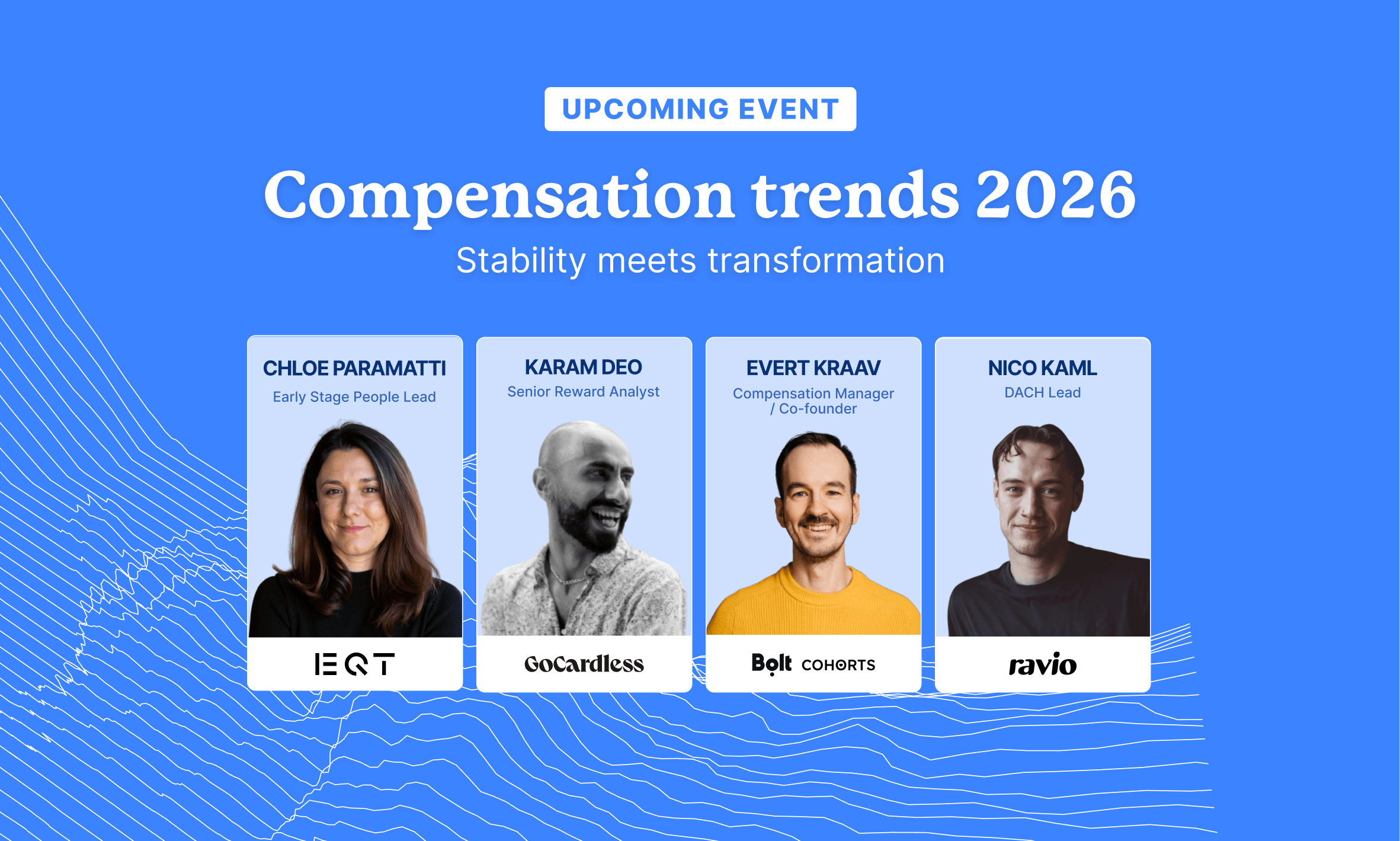Most companies recognise they have skills gaps.
In fact, according to McKinsey, 87% of organisations either already have skills gaps or will face them in the coming years – these are skills that the business knows it needs to achieve goals and priorities, which are currently lacking within the workforce.
Those crucial but missing skills should be a driver for strategic compensation decisions, optimising budget to incentivise internal skills development and ensure skilled talent can be secured for new roles.
Yet, our recent survey of Reward leaders found that only 12% of companies currently have a formal skills gap analysis process.
For Rob Green, Founder of Darwin Total Rewards and Associate at MCR Consulting group, the solution requires connected thinking to better understand business critical skills, filtering down to a Rewards approach that treats skills like performance, incentivising those capabilities the business actually needs.
Subscribe to our newsletter for monthly insights from Ravio's compensation dataset and network of Rewards experts 📩
What happens when there’s no skills gap analysis in place?
The absence of strategic skills planning undermines the effectiveness of both talent acquisition and compensation structures.
Rob recalls, for instance, the high-growth nature of the tech sector in 2018-2019: “Tech companies were growing fast, which meant Talent Acquisition teams were focused on hiring at break neck speed to meet those growth ambitions.”
"It meant pace and volume were the priorities – cohesive and aligned views on what we're hiring for and the skills we actually needed to prioritise for business impact were sometimes lacking."
The impact on the Rewards team was a constant need to act reactively, with exceptions becoming the norm. "TAs were coming to the Rewards team regularly with 'this candidate is asking for top of the current salary band, they’re saying they have three other offers at this level, and they’re a must hire for the business, how can we make it happen?'", Rob recalls.
"The major risk here is financial,” Rob explains. “We don’t want to slow down decision-making or risk losing talent, but supporting the business to understand and manage payroll costs is an important part of the Rewards function, and when speed is the priority decisions can quickly become reactive.”
Of course, this reactive approach also leads to inconsistencies which, over time, can easily become inequities that are difficult to reverse later down the line.
For People & Reward leaders, therefore, introducing a strong skills gap analysis process could be the way into a more strategic approach, prioritising compensation budget for the capabilities your business actually needs .
So for those 88% of companies that our survey identified don’t yet have a formal skills gap analysis process in place, what’s the right place to start?

Rob's framework for strategic skills planning
With over 20 years of Global Total Rewards expertise across diverse sectors and organisations of all sizes, Rob Green has seen what works (and what doesn't).
He shared his most important lessons learnt for bringing skills gap analysis into People & Culture strategy with us – including how it influences Rewards decisions.

Skills gap analysis has to start with business direction
Most companies approach skills planning backwards – starting with what they see in the market or hear from the team.
Our survey data reflects this, with 50% of companies using manager feedback (including hiring needs) to define skills gaps, while 21% rely on employee requests for skill development.
Feedback from the team is always valuable, but when it comes to identifying business critical skills gaps, it isn’t the right place to start.
"The first step should always be getting a clear view on business strategy and goals from the executive team,” Rob says. “This enables an evaluation of the skills needed to reach those goals – without that foundation, you're just guessing at what capabilities matter the most.”
Step 1: Strategic alignment. The CHRO works with leadership to translate business strategy into the specific skill requirements needed to execute on those goals, complete with the justification for why each skill is needed to meet goals.
Step 2: Skills gap analysis. The HR team conduct a skills audit or inventory process, which should focus on identifying:
- Existing skills within the team via role descriptions and performance feedback documentation (a skills matrix can be a helpful tool here)
- The skills deficit between those existing skills and the strategic requirements
- Potential to upskill existing team members to close the skills deficit, instead of hiring in those skillsets.
Step 3: Strategic validation. The CHRO takes this information back to the executive team to ensure full alignment that these are the skills needed to meet business goals.
Step 4: Teamwide execution. With clarity on priority skillsets, each team has clear direction on how to embed skills planning into their activities:
- L&D builds targeted programmes around validated skill gaps
- Talent focuses on hiring talent with the skills that L&D agree can't be filled internally
- Rewards optimises compensation budget to incentivise the skills the business actually needs – both through new hire offer decisions, and performance and progression conversations.
"Ultimately it's about having a connected approach," Rob emphasises.
"Each function aligns with the strategic direction on business critical skills, rather than operating in isolation and making reactive decisions which both burn through budget and create inconsistencies that are hard to fix in the future."
💡 Example: Standard Chartered’s skills-based L&D programme
Standard Chartered conducted an extensive firm-wide evaluation in 2020 to determine which skills and jobs would be essential for their business over the next 3-10 years.
They then introduced ‘Future Skills Academies’: targeted learning opportunities in areas like cybersecurity, AI, or sustainability where the company had identified skills gaps.
Alongside these training programmes, Standard Chartered introduced a Skills Passport system. Employees are able to apply to work on real internal projects to put their new skills into practice, with each project adding to their ‘passport’ of validated capabilities.
According to Rebekah Heaven, Standard Chartered's Head of Future of Work, the cost savings of enabling an existing employee to shift from a redundant role to a new skillset is around $49,000 per role.
With 32,000 employees so far having participated in the Future Skills Academics, and 26,000 in the Skills Passport, that represents a huge saving – all whilst also preparing Standard Chartered to be in a strong position for future success.
Fill skills gaps internally before hiring externally
Once you've identified strategic skill gaps, the natural inclination might be to hire new team members with those skills – but Rob’s advice is, instead, to look internally first.
"Looking at existing employees who have skillsets they aren't using, or would be keen to develop to support their career progression, is the best place to start," he explains.
We’ve already seen the importance of designing learning and development programmes to support employees to upskill. For People and Rewards teams, two additional actions are needed:
- Bring those business critical skillsets into your job level and career progression frameworks
- Reflect this in your compensation review strategy.
The aim is to connect skills development directly to career and pay progression.
"First, go back to the heart of your compensation structures – the job architecture, levels, career paths,” Rob advises, “build the desired skills into those frameworks where relevant, and communicate the changes clearly to employees.”
“Then, ensure this is reflected in your compensation review processes too.”
That means:
- Flag employees who already have in-demand skills: their compensation may need to be increased to reflect this, given those skills are now being prioritised in the company’s hiring and retention plans.
- Reward employees who make progress on developing desired skills: Rob suggests a pay for performance model where employees who demonstrate new capabilities and clear value add to the business are rewarded through the merit cycle – either through a higher salary increase or through an unconsolidated bonus in recognition of the fact that the skills need might be temporary.
This aligns with a skill-based pay approach (sometimes called ‘pay for skills’) – where employees are rewarded based on their skillset, rather than just their job title or tenure. Skill-based pay ensures that new hires are compensated for the skills they possess and demonstrate, and that pay progression is directly linked to employees acquiring the skills the business needs.
Compensate in-demand skills within existing ranges until you’re certain of the data
Some of the skills identified as business critical through the skills gap analysis will inevitably be skills that other companies are also making a top priority, and therefore are in high-demand in the talent market.
This is especially true with new and emerging skills that quickly become desirable for all businesses.
When external demand spikes, pay premiums always follow, as companies battle to secure talent with those skillsets quickly for competitive advantage. We’re seeing this currently with AI – companies are racing to build their AI capabilities, leading to AI Engineers receiving 9.5% higher new hire salary offers than standard Software Engineers.

The temptation is to follow the crowd but, as Rob highlights: "if you pay what a candidate asks, or align with the market premium, then you could be spending budget blindly."
"When you’re dealing with in-demand skills, there's just too much flux and change to know that the market data you have is really reliable,” he explains, “even worse with new skillsets where there’s a lack of market data anyway.”
Rob's advice is to stay within your existing compensation frameworks until the market madness settles down.
“Wait until the data is telling a consistent story before you make any permanent changes to avoid inconsistencies and budgeting errors. Time will tell whether it’s just a trend, or whether you actually need to make structural changes, such as building a dedicated salary band for a new role like an AI Engineer.”
In the meantime, Rob suggests three tactics:
- Gather insights via business leaders and the Talent Acquisition team. Whilst making decisions based on candidate requests or other job adverts is always risky, business leaders and Talent Acquisition teams will develop a picture of the market reality as they speak to candidates – and this information helps in the short-term to make informed-enough decisions that support the business to move forward.
- Use the upper quartile of existing salary bands to shape competitive offers. This way, the skill that the business needs and which is in high demand in the market is reflected through market competitive compensation, but you’re still operating within existing structures to maintain internal fairness and avoid painful inconsistencies later.
- Get creative beyond base salary. Competing on salary can lead to inflated compensation budgets. Instead think creatively about how you could compete beyond salary, such as variable bonuses or equity incentive plans tied to high performance and the desired skills. However, remember that compensation creativity alone won't retain talent if broader workplace factors like culture, leadership, and development opportunities aren't working well.
In summary: Strategic skills planning over reactive market responses
The key takeaway from Rob’s experience? The need to shift from reactive hiring to strategic decisions led by real business alignment and priorities – and the importance of People and Rewards teams in driving this.
As Rob puts it: “Whilst it is easy to get pulled into another request to provide a one-off benchmark for a new skill priority, the actual solution is having a strategic approach to identifying skills needs and attracting and retaining the talent to fill that need.”
Without skills gap analysis, People and Reward teams are trapped in constant firefighting – handling salary exceptions, chasing market trends, and watching compensation budgets spiral out of control.
Instead those 88% of companies still operating without formal analysis should build connected thinking that treats skills like performance, incentivising the capabilities the business actually needs rather than jumping on whatever's hot in the market.



